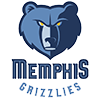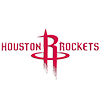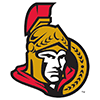There are any number of skills that go into being a successful fantasy GM, and an additional host of skills that come with being a successful keeper or dynasty GM. Talent evaluation, understanding concepts like opportunity costs and sunk costs, and being a good negotiator are all fairly universal tools used by champs across all leagues, but one of the most important traits you can posses – in keeper/dynasty leagues especially – is a simple one.
Patience.
Early on, it's far too easy to get swept up in the excitement of a new season and overreact to every little thing. Baseball's back, baby! Ozzie Albies (who literally homered again as I was writing this) is the new Jose Altuve! Jakob Junis is the new Greg Maddux! OMG! We're only two weeks into a 26-week grind, though – that's under eight percent, if you don't want to do the math – and trends that seem to be developing, on micro and macro levels, will often end up simply being blips that are forgotten by the All-Star break.
However, there's another trait most fantasy champions also possess, and that's aggression. To win a title, you have to know how and when to be aggressive – when to jump on a seeming breakout with a big FAAB bid, when to keep pursuing a possible trade – in order to put a solid roster over the top.
This early in the season, how do you balance those two factors? How do you know
There are any number of skills that go into being a successful fantasy GM, and an additional host of skills that come with being a successful keeper or dynasty GM. Talent evaluation, understanding concepts like opportunity costs and sunk costs, and being a good negotiator are all fairly universal tools used by champs across all leagues, but one of the most important traits you can posses – in keeper/dynasty leagues especially – is a simple one.
Patience.
Early on, it's far too easy to get swept up in the excitement of a new season and overreact to every little thing. Baseball's back, baby! Ozzie Albies (who literally homered again as I was writing this) is the new Jose Altuve! Jakob Junis is the new Greg Maddux! OMG! We're only two weeks into a 26-week grind, though – that's under eight percent, if you don't want to do the math – and trends that seem to be developing, on micro and macro levels, will often end up simply being blips that are forgotten by the All-Star break.
However, there's another trait most fantasy champions also possess, and that's aggression. To win a title, you have to know how and when to be aggressive – when to jump on a seeming breakout with a big FAAB bid, when to keep pursuing a possible trade – in order to put a solid roster over the top.
This early in the season, how do you balance those two factors? How do you know when to stay patient with a slumping player, and when to to keep your powder dry and your FAAB dollars in your pocket, versus when to wreck your budget going all-out for the next potential superstar?
League Depth
To me, the primary factor to determine how you balance out being patient versus being aggressive is the depth of your league. In a shallow format such as a standard 12-team mixed with only a handful of bench spots per team, replacement level on the waiver wire will be high. If you take a chance on a young player and he doesn't pan out, you'll still be able to pick up a solid, boring veteran with a starting gig to replace him. At the same time, with more star power concentrated in fewer rosters, the pressure to find that next star is increased. Too many weak spots on your roster – and in these cases, "weak spot" can simply mean a platooning player who only gets 4-5 starts a week instead of 6-7, or an overly heavy reliance on high-K middle relievers instead of starting pitchers on your staff – can put you in a hole in the counting stats (RBI/runs for hitters, wins/Ks for pitchers) that it's tough to dig out of.
In these leagues, patience can be far from a virtue. If a veteran is struggling in mid-March, particularly if he wasn't a high draft pick for you to begin with, cut him and look for an upgrade, and swing for the fences when you do so. Ryan Zimmerman's stinking up your CI spot? Kick him to the curb, but rather than settling for a Matt Duffy, take a chance on Colin Moran or Maikel Franco instead. If the kid cools down after you add him, there will always be another Duffy on waivers, or you might even be able to circle back to Zimmerman once he shakes out of his slump. If the youngster pans out, though, he'll not only replace the production you were expecting from that roster spot to begin with, he'll become a potential foundation piece for next season's team.
In deep leagues such as 12-team AL-only or NL-only with lengthy reserve lists, however, you need to keep a tight rein on your aggression, at least when it comes to roster juggling. While the reserve list does allow you to bench struggling vets rather than cut them entirely, the options for replacing them on the active roster are usually mediocre at best, and you're faced with a completely different set of problems. Is it better to continue taking ohfers every day until the slump ends, or plug in a backup infielder who won't get more than a start or two a week but might luck into a steal or a handful of runs and RBI? Instead of flipping around your active roster constantly, the place to use your aggression in these leagues is to try and get ahead of the pack when it comes to free agents. Dedicate a reserve spot or two to roster churn, and look for players who could find their way into real value a few weeks down the road. Pick up the backup to an injury-prone starting outfielder, even if the starter seems healthy right now. If there's no obvious heir apparent to a shaky closer, grab some of their setup men, even if they aren't the relievers everyone else is chasing. Last year, no one thought Bud Norris or Alex Claudio would be getting saves, until suddenly, they were. Taking this approach helps you avoid FAAB bidding wars for players after they have established roles, while also improving their value as keepers with lower salaries.
Between those two extremes are a wide range of leagues with different bench sizes and roster depth, each requiring their own balance. When deciding whether or not to replace a slumping player, consider the following questions:
1. Does the potential replacement have a plausible ceiling as high as the player you're looking to replace?
If the answer is no, this is probably a good time to exercise patience and wait for the slumping player to turn things around. Dumping a good player who's struggling for a lesser player who happens to not be struggling at that moment rarely works out well in the long run.
2. If the potential replacement doesn't work out, how many other players at the position are available that you could stomach rostering instead?
The more viable, if not quite as desirable, options there are floating around, the more aggressive you should be in trying to get the one you want. Focus on what could go right when placing a FAAB bid, but don't lose sight of what could go wrong when looking at the bigger roster picture.
3. How much will the player you're dropping stand out in the free-agent pool?
You may be sick of a player's lousy performance on your own roster, but if he generates a huge bidding war the week after you cut him, you've probably made a big mistake in letting him go.
The Success Cycle
The other main factor in determining how aggressive or patient you should be with roster moves is where you stand in the success cycle.
If you're not familiar with the term, 'the success cycle' refers to the inevitable waves of winning and rebuilding fantasy teams in competitive keeper/dynasty leagues go through. No matter how good a GM you are, and no matter how strong a core of young talent you assemble, eventually the ride at the top will end and you'll have to rebuild another young core.
Generally speaking, the more you expect to win this season, the more patient you should be in the early going. If your projections and expectations all said you'd be competing for a title, but your team is languishing in the standings in mid-April, the worst thing you can do is panic and make wholesale changes. On the flip side, if you already expected to be rebuilding, there's little downside in being more ruthless and aggressive in your acquisitions, and you shouldn't hesitate to cutt an underperformer in 2018 to try and get an upgrade for 2019 and beyond.
Other factors can also factor into the mix as well. If you've designed your roster to allow for streaming SPs, for instance, you'll have fewer reserve spots to play with for upgrades to the rest of your roster, which means your resources (and your aggression) should be channelled into those pitching pickups.
As a test case or thought experiment, in shallower leagues where he's available, consider Jurickson Profar. He could be the ultimate post-post-post-hype sleeper, right? At one time he was one of the top prospects in baseball (reminder: back in 2012, he rang up a .281/.368/.452 line with 14 homers and 16 steals at Double-A in his age-19 season), but injuries prevented him from ever getting a chance to blossom. With Rougned Odor hurt and in the middle of a slump that seems like it's lasted longer than a full calendar year, though, Profar is now the Rangers' starting second baseman, just as he was predicted to be way back when – and he celebrated it Wednesday with two hits and a steal. His overall slash line is still poor in his so-far sporadic playing time, but his 7:3 BB:K is outstanding, and he also walked more than he struck out at Triple-A last year. If Profar has a big weekend in Houston, he will be at the very top of every wag's Hot Pickup list. As a middle infielder, would he be an upgrade for you on Orlando Arcia (.171/.227/.195 and zero homers or steals so far)? Eduardo Nunez (.220/.256/.390, also still looking for his first SB)? How about, dare I say, Yoan Moncada (.200/.321/.333, also zero steals, also also a horrendous 39.6 percent strikeout rate)?
How patient should you be with your current, flailing MI option? And how aggressive should you be chasing after Profar's possible breakout to replace them?







































